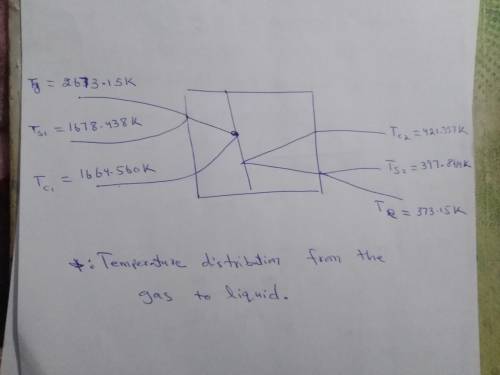
Physics, 15.02.2020 00:57 glowbaby123
A composite wall separates combustion gases at 2400°C from a liquid coolant at 100°C, with gas and liquid-side convection coefficients of 25 and 1000 W/m2 ⋅ K. The wall is composed of a 12-mm-thick layer of beryllium oxide on the gas side and a 24-mm-thick slab of stainless steel (AISI 304) on the liquid side. The contact resistance between the oxide and the steel is 0.05 m2 ⋅ K/W. What is the rate of heat loss per unit surface area of the composite? Sketch the temperature distribution from the gas to the liquid.

Answers: 1


Another question on Physics

Physics, 21.06.2019 16:20
When a resistor with resistance r is connected to a 1.50-v flashlight battery, the resistor consumes 0.0625 w of electrical power. (throughout, assume that each battery has negligible internal resistance.) what power does the resistor consume if it is connected to a 12.6-v car battery? assume that r remains constant when the power consumption changes.
Answers: 1

Physics, 22.06.2019 06:30
The mini-refrigerator fire was most likely caused by what type of wiring?
Answers: 2

Physics, 22.06.2019 09:00
One form of energy can be another type of energy. a. created to form b. transformed into c. destroyed and then created to form
Answers: 1

Physics, 22.06.2019 12:30
Aboy with a mass 25 kg climbs into a small tree. he sits on a branch that is 2.o m above to the ground.what is his gravitational potential energy above the ground?
Answers: 1
You know the right answer?
A composite wall separates combustion gases at 2400°C from a liquid coolant at 100°C, with gas and l...
Questions

History, 02.02.2020 16:43



History, 02.02.2020 16:43

Mathematics, 02.02.2020 16:43






Mathematics, 02.02.2020 16:43

History, 02.02.2020 16:43

Mathematics, 02.02.2020 16:43

Mathematics, 02.02.2020 16:43


Mathematics, 02.02.2020 16:43




Mathematics, 02.02.2020 16:43


 ,
,  are temperatures of gasses and liquid in Kelvins,
are temperatures of gasses and liquid in Kelvins,  and
and  are thicknesses of gas layer and steel slab in meters,
are thicknesses of gas layer and steel slab in meters, ,
,  are convection coefficients gas and liquid in
are convection coefficients gas and liquid in  ,
,  is the contact resistance in
is the contact resistance in  ,and
,and  are thermal conductivities of gas and steel in
are thermal conductivities of gas and steel in  ,
, 









